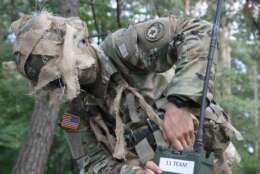Defense News
-
A new report by George Mason University's Center for Government Contracting chronicles the ways in which the Defense budgeting process has become increasingly inflexible over the last seven decades, how it's shackled technological innovation in DoD, and what to do about it.
December 21, 2022 -
In today's Federal Newscast: Republican Senators urge Defense Secretary Austin to reinstate military members and to issue backpay for vaccine-related discharges. The personal information of more than 250,000 people possibly exposed in data breach. And L3Harris Technologies is buying Aerojet Rocketdyne for almost $5 billion.
December 20, 2022 -
Paul Puckett, the former director of the Enterprise Cloud Management Agency (ECMA) in the Army’s CIO office, said the cloud is not only demonstrating value, but are also fundamentally changing the way that the Army looks at requirements, organizational alignment and incentive structures.
December 16, 2022 -
The Army expects it'll take about a year to get everyone on the virtual desktop capability.
December 16, 2022 -
The Army is asking industry — and itself — whether it truly needs to own and maintain 350,000 high-end tactical radios. Buying simpler radios and leasing the more advanced ones are among the options on the table.
December 16, 2022 -
DIA officials and the Pentagon's AI chief see a path forward for the Defense Department to become a machine learning talent incubator.
December 14, 2022 -
U.S. armed forces operate at sea, on land, and in the air. The one place they all operate in: cyberspace. Now the Navy has issued what it called a cyberspace superiority vision. It has three principles: secure, survive, and strike.
December 13, 2022 -
The Pentagon expects to get the ordering process for new JWCC services off the ground quickly now that awards have been issued to four companies, but each task order could take longer to process than DoD originally anticipated.
December 09, 2022









